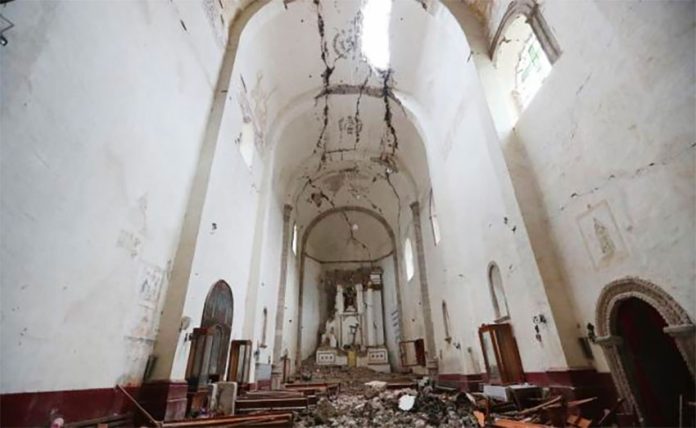It has been 25 years since 14 monasteries dating from the 16th century became a World Heritage Site in Morelos and Puebla, an anniversary that is being celebrated this month by the secretaries of Culture in the two states, along with the National Institute of Anthropology and History (INAH).
But the occasion is marred by the condition of the complexes two years after the massive 2017 earthquake devastated central Mexico.
The monasteries were inscribed onto UNESCO’s list on December 17, 1994. Eleven are located in the small state of Morelos, and three in Puebla. Collectively they are known as the 16th-century monasteries on the slopes of the volcano Popocatepetl on what is called the Route of the Convents.
The monasteries employed an architectural model adopted by the evangelizing Franciscans, Dominicans and Augustinians which would influence similar construction in colonial Mexico. The religious institutions were essentially built as fortresses as the indigenous populations had not yet been completely subdued.
One important aspect of the monasteries is the atriums with their “open chapels,” open archways to allow for the saying of mass to the large number of indigenous who would gather in the open-air atrium. These were built first, with the rest coming later.
The monasteries functioned nearly non-stop until the 19th and early 20th century, until anti-clerical politics and laws closed cloisters down and expropriated them. By the 21st century many had been converted into museums or other public spaces.
The earthquake on September 19, 2017 affected all of these monasteries. Centered in nearby Axochiapan, Morelos, the quake heavily damaged or destroyed architectural elements such as bell towers, cupolas, apses, vaulted ceilings, walls and even entire wings. The falling debris wrecked irreplaceable murals, other artwork, religious icons, organs, bells, altars and pews.
Shortly after, federal and state authorities announced efforts to study and restore all of the complexes, along with many other historical sites damaged in the region. By September 2019, authorities admitted the effort was proceeding slowly. One reason was that reconstruction requires the use of historically accurate materials and techniques, often the piecing together of fragments that had been all but crushed.
The goal for the reconstruction of the buildings is not only to recreate what was, but to be sure that they can withstand future earthquakes.
The extent of the damage and the challenges reconstruction pose were presented in a three-part documentary by INAH and the Morelos State Radio and Television Institute for the anniversary.
The 14 monasteries are San Mateo Apóstol y Evangelista in Atlatlahucan, the Cuernavaca Cathedral, Santo Domingo de Guzmán in Hueyapan, Santo Domingo de Guzmán in Oaxtepec, Santiago Apóstol in Ocuituco, La Natividad in Tepotztlan, San Juan Bautista in Tetela del Volcán, San Juan Bautista in Tlayacapan, San Guillermo in Totolapan, San Juan Bautista in Yecapixtla, Inmaculada Concepción in Zacualpan de Amilpas, Francisco de Asis in Calpan, San Miguel Arcangel in Huejotzigo and La Asunción in Tochimilco.
Sources: La Jornada de Oriente (sp), El Universal (sp), Excélsior (sp)
